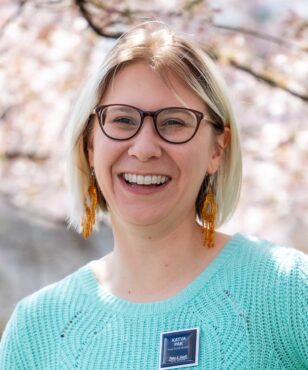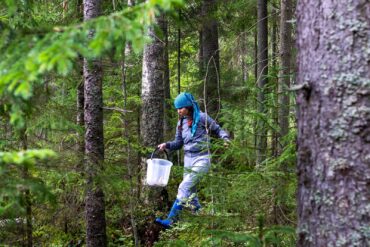 In the dead of the night, deep in the Central Cascades, Jeremy Collison navigated the dark woods, with only a headlamp to cut through the curtain of mist separating him from his prize. While others might curse the precipitation, Collison and his companions celebrated, as each drop puddling on their skin signaled a higher chance of finding their treasure.
In the dead of the night, deep in the Central Cascades, Jeremy Collison navigated the dark woods, with only a headlamp to cut through the curtain of mist separating him from his prize. While others might curse the precipitation, Collison and his companions celebrated, as each drop puddling on their skin signaled a higher chance of finding their treasure.
“I was getting chills down my spine,” Collison recalled. “Your body is telling you, ‘More, please.’ The mushroom fire was truly burning at that point.”
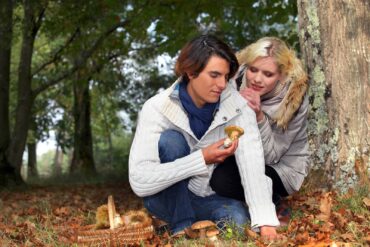 Collison is a true mycophile, “a devotee of mushrooms,” as defined by the Meriam-Webster dictionary. For more than 10 years, he’s been admiring and learning about mushrooms. Today, he’s sharing his passion for mushroom foraging with others and giving them resources to discover mushrooms on their own.
Collison is a true mycophile, “a devotee of mushrooms,” as defined by the Meriam-Webster dictionary. For more than 10 years, he’s been admiring and learning about mushrooms. Today, he’s sharing his passion for mushroom foraging with others and giving them resources to discover mushrooms on their own.
It all started in spring of 2016. His thrill for forest exploration evolved into a new passion when a friend — who happened to be a fungi fan — joined Collison for a walk in the forest.
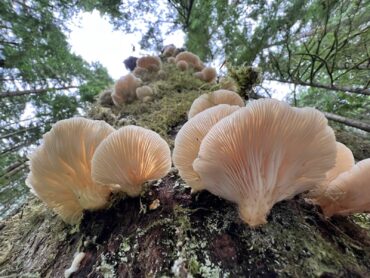
“Within a minute from out from our car, we found the first morel,” Collison said. “And then another, and another and another. You get those dopamine hits. It was just like being a child on a beach finding seashells. It was just pure joy.”
As Collison dove deeper into the world of mushrooms — reading books, taking classes, experimenting with cultivating — he wanted to connect with others fascinated by them. He started a mushroom group on Meetup.com and quickly realized he was becoming the local mentor for many new mushroom fans.
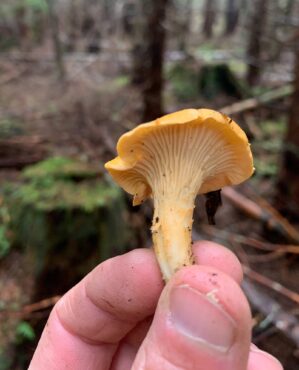
“I felt very early that I was spending more time helping bring other people along on this path rather than learning from each other,” he said. “A big thing people were most interested in was edible mushrooms and how to identify them.”
The need for educating the general public inspired Collison to create SalishMushrooms.com in 2017. The website offers a wealth of information on common edible mushrooms, poisonous mushrooms and any upcoming events he’s hosting. Having worked in the technology industry, Collison has a naturally analytical mind and also enjoys data collection and experimentation. His other favorite side projects are creating 3D models of mushrooms while out in the field (using an iOS app called 3D Scanner), as well as studying recent forest fires to chart the most likely spots to find morels.
Mushrooms and Fungi in Our Environment
Known by the Romans as “food of the Gods” and for centuries in Chinese culture as an “elixir of life,” mushrooms have been sought out by humans throughout history. However, they’ve been a little slower to gain popularity in the United States. There’s still a lot of misinformation and fear about mushrooms in general. For example, did you know that, according to mycologists, it’s generally safe to handle and even taste — chew and spit out, not swallowing — any mushroom, even poisonous ones?
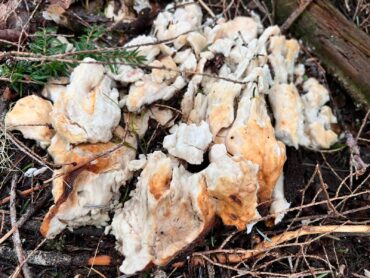
Mushrooms, broadly defined, are the sexual reproductive bodies of certain fungi species (pronounced “fun-ji” or “fun-gee,” depending on where you live). A common household fungus you’ve likely seen is mold growing on old bread. But in the forest, fungi play a vital role in our ecosystem by breaking down organic matter, usually plants, and also help supply nutrients to allow those plants to grow. Without them, soils would be depleted and our world would become buried in layers of old organic debris.
If you stroll around Grand Forest on Bainbridge Island, you may see honey mushrooms, Northern red belt or Western panther, but it’s easy to forget the vast network of microscopic fungal threads beneath your feet. Each mushroom is connected to a series of narrow, complex tubes called hyphae, collectively known as mycelia (singular mycelium). These threads grow through the soil, wood or any other material where a fungus lives, enabling plants to exchange nutrients with each other. While commonly hidden underground, mycelia can also live on dead or living organic matter.
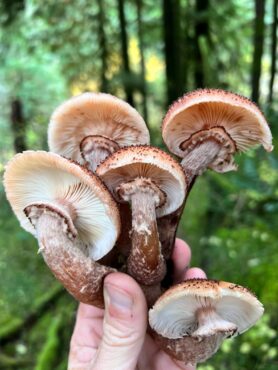
Aaron Hilliard is a local mycophile born into the world of mushrooms. Growing up in Bremerton with his mushroom-obsessed grandmother, he began foraging for them at 8 years old. One day, when his grandma lived in the mountains around Lake Cushman, Hilliard ventured solo into the forest and collected a trove of mushroom treasures.
“I just remember the look on her face — she was so excited,” Hilliard said. “She made a really good pot roast with chanterelles, and I was just hooked after that.”
Today, Hilliard is the vice president of the Kitsap Peninsula Mycological Society and hopes to raise awareness of fungi’s important role in our ecosystem. He said many forestry techniques strip out trees and don’t consider the impact this has on fungus regrowth, which is probably way more important for our survival than we realize. After all, without fungi, there would be no plants. And without plants, there would be no animals.
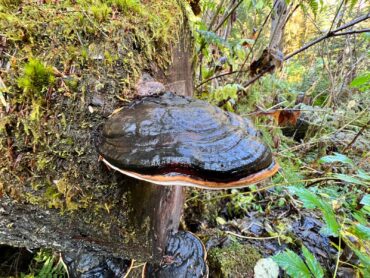
Mastering the World of Mushrooms
With how valuable mushrooms are to both cuisine and the ecosystem, it’s easy to see why so many people show an increased interest in them. Local groups, like the Kitsap Peninsula Mycological Society and the Puget Sound Mycological Society, offer a wealth of educational resources and host mushroom excursions.
One valuable resource for mushroom-seekers is iNaturalist.com, a nature website that helps you identify plants and animals. More importantly, it allows anyone in the world to become a contributor to science and connect with a community of scientists and naturalists. You can quickly search and sort information about mushrooms spotted in a particular area, and then filter and rank by frequency and date. Unlike guide books, the site is constantly updated by contributors and provides a snapshot of mushrooms in any region with the click of a button. While it’s a great tool to track and help identify species on the go, keep in mind it can occasionally lead to incorrect identifications.
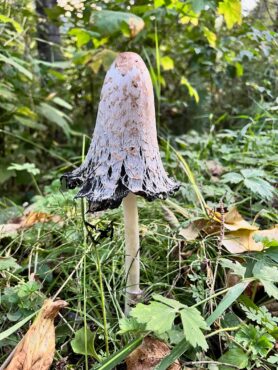
Some mushrooms look like coral you’d find in ocean reefs; others look like brains or dried apricot. Shelf fungi blend in with the trees they adorn and often feature wavy, wood-like rings and various shades of brown. A common shelf mushroom is the Northern red belt, which sports bright layers of reds and yellows.
Matsutakes, another Pacific Northwest mushroom, feature a distinct Red Hots cinnamon candy scent. They often cost more than $70 per pound, depending on the quality of the mushroom’s veil — the thin tissue connecting the cap to the steam. A delicious, nutritious way to prepare them is by making “matsutake gohan,” a soup you prepare by steaming the mushrooms with rice in a rice cooker.
With more than 3,000 identified species of mushrooms in the Pacific Northwest, scientists estimate there are another 1,000 or more species waiting to be discovered and named. Because there’s so much potential for discovery, Collison hopes more people feel inspired to contribute to our collective knowledge by sharing observations.
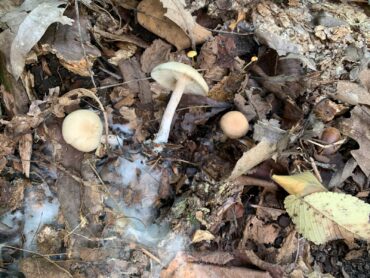
“Any one of us can walk into a forest and find a mushroom that does not have a name yet. That is not uncommon at all,” he said.
Of course, going through the process of discovering and naming a new species is no simple task, but the door for discovery is open.
Clues for Identification
Collison said the first thing people usually want to know about mushrooms is how to identify edible ones. However, the task of identifying mushrooms is much like a game of “Guess Who,” only you have thousands of lookalikes to search through. Since many mushrooms have poisonous lookalikes, learning common edible mushrooms and their poisonous doppelgangers is a good place to start. A few harder-to-confuse species are chicken of the woods, shaggy mane and cauliflower mushrooms.
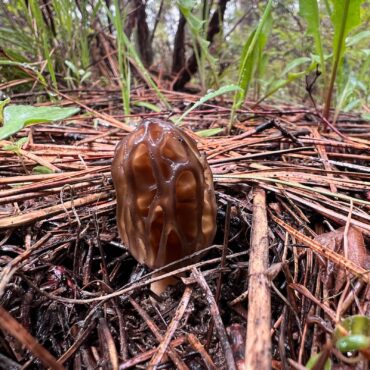
There’s no way to look at any given mushroom and know if it’s edible or poisonous. Even if you think you’ve correctly identified a mushroom, it’s always a good rule of thumb to eat a tiny bit, wait and see how it affects you. Cooking mushrooms doesn’t inactivate all toxins, so never eat a mushroom unless you’re 100 percent sure what it is. Also, make sure to save a sample of any wild mushroom you do eat in case you need to seek medical attention.
The size, shape and color of a mushroom’s cap and stem, among other traits, can help identify a species. The smell can offer another clue. The prince — related to button mushrooms you see in the grocery store — appears in summer around the Pacific Northwest. If you scratch the mushroom’s base, it releases a sweet almond scent. However, it has poisonous lookalike species that release a glue-like smell.
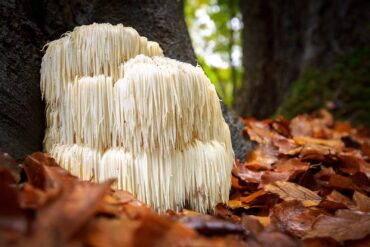
Most people usually have a difficult time describing what they’re smelling, especially since it’s hard to find words for scents they’re not familiar with, Collison said. To make the process easier, he created a “word cloud” using a database of mushroom descriptions. A word cloud takes words and creates a visual representation of them based on how often a particular word is used. The most commonly used word will appear the largest, with words shrinking in size the less they appear.
At the top of the list for mushrooms is the word “farinaceous,” which many mushrooms possess. Sometimes it’s a mealy, green corn smell or, when it’s really strong, it has a cucumber-watermelon smell. Other frequent scents include “garlic” and “floral.” By building a catalog of terms that mushroom seekers can look to in the field, Collison hopes to make the identification process easier.
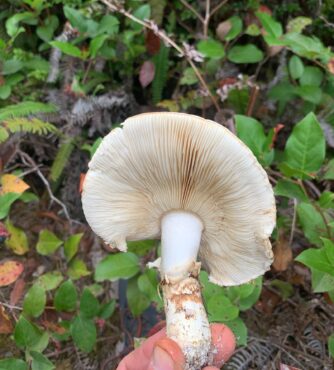
One of Collison’s more recent endeavors involved transforming his shower into a fruiting chamber, complete with a fogger to control humidity, as well as an exhaust to remove spores. Bags, containers and buckets cover a tower of shelves, each containing growing mushrooms.
Collison grows two common and popular edible mushrooms found in the Pacific Northwest, lion’s mane and oyster. He also grows reishi mushrooms, which are revered for their medicinal uses more than their nutrition. For those who want to cultivate their own mushrooms, fruiting blocks of different species are available to purchase. A mixture of organic materials is used to adjust the moisture-holding capacity and water percolation. Collison uses a mixture of sawdust, straw and coffee grounds.
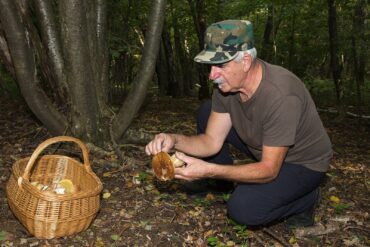
For those who want to learn more about mushrooms, Collison encourages simply walking around outside and looking at the ground. Becoming comfortable with adventuring outside is often the biggest challenge people have, he said. Grab a map, pick a new trail and start exploring and observing. Become a contributor on iNaturalist by uploading your finds. You can also join one of the local mycological societies and connect with Collison for field trips or workshops. “Mushrooms of the Pacific Northwest,” written by Seattle-based mycologist Steve Trudell, provides a thorough overview of mushrooms and common misconceptions, so it’s a great place to start as well. For more information on Collison’s resources and educational events, visit SalishMushrooms.com.




